How to Overcome Middle-of-the-Night Anxiety
Introduction
You wake up in the dark, heart racing.
The room feels heavier than it did when you went to bed. Your mind switches on like a searchlight—replaying conversations, predicting disasters, or wondering why you can’t just turn it off.
You glance at the clock. 2:47 A.M.
Then 3:09 A.M.
Then 4:00 A.M.
Welcome to middle-of-the-night anxiety—a quiet storm that hits millions of people, especially those living with chronic stress, illness, or emotional exhaustion. But there’s good news: this doesn’t have to define your nights. With the right body-mind strategies, you can retrain your system to find calm again, even in the dark.
Looking for supplements for This? Click here.
🧠 Why Night Anxiety Feels So Intense

Anxiety hits harder at night because your body is supposed to be in rest-repair mode. When your stress hormones don’t drop as they should, the quiet amplifies whatever’s left unresolved.
Hormonal shifts
Cortisol, your main stress hormone, should be lowest at night. If it spikes too early—or stays high from daytime tension—you’ll wake suddenly with a surge of alertness.
Autonomic imbalance
During deep sleep, your parasympathetic (“rest and digest”) system should dominate. Anxiety flips the switch back to sympathetic (“fight or flight”) mode.
Mental noise
When distractions fade, your brain finally has space to process. Thoughts you ignored all day—worries, guilt, to-dos—step into the spotlight.
Physical triggers
Caffeine too late, blood-sugar dips, dehydration, or even tight muscles can send stress signals through your nervous system.
Understanding these mechanics helps you respond with compassion rather than frustration. You’re not “broken”—your body is just trying to protect you at the wrong time.
🌬️ Step 1: Calm the Body First
When anxiety wakes you, start with your body, not your thoughts. The body sends 80 % of the information to the brain—not the other way around. Calming your physiology tells your mind it’s safe to rest again.
🫁 The 4-4-8 Breath
Inhale gently through your nose for 4 seconds, hold for 4, exhale through your mouth for 8.
Long exhalations activate the vagus nerve and slow your heart rate.
Repeat for at least 2 minutes.
🌊 The Ground-and-Feel Technique
Without moving much, mentally name what your body touches:
“Pillow. Sheet. Air on my skin. Weight of the blanket.”
This shifts attention away from rumination toward sensory reality.
🌡️ Cool down
Anxiety heats the body. Flip your pillow, move one leg outside the blanket, or breathe near an open window. Temperature changes cue the nervous system to settle.
☁️ Whispered mantras
Silently repeat something rhythmic—
“I’m safe now.”
“Night passes; morning always comes.”
It doesn’t need to be profound; it just keeps your mind anchored.
🧘 Step 2: Work With, Not Against, Your Thoughts
Trying not to think usually backfires. Instead, learn to redirect and de-identify from the thought spiral.
🪞 Observe, don’t engage
Label what’s happening:
“My brain is having anxious thoughts.”
That single phrase separates you from it.
✍️ Thought download
Keep a small notebook or notes app by the bed. Write one sentence per thought: “Tomorrow—call pharmacy,” “Talk with partner about schedule,” “Still upset about what he said.”
Getting them out of your head tells the brain the task is “handled.”
🔄 Acceptance instead of resistance
Say: “It’s okay to feel alert. My body’s confused, not dangerous.”
Acceptance lowers adrenaline faster than fighting the feeling.
🌿 Step 3: Support the Nervous System During the Day
Nighttime anxiety often begins in daytime patterns—too much stimulation, too little decompression.
☀️ Morning sunlight
Ten minutes of natural light within an hour of waking helps reset your circadian rhythm, making night cortisol drops more predictable.
🕒 Strategic caffeine
Limit caffeine to before noon. Even small afternoon doses can delay melatonin release.
🧉 Balanced blood sugar
Include protein and healthy fats at dinner (or a small bedtime snack like almond butter on toast). Sharp glucose drops around 2–3 A.M. can mimic anxiety surges.
🧍 Micro-calming moments
Don’t wait for bedtime to relax. Every two-hour break—stretch, breathe, or step outside—conditions your nervous system to downshift more easily later.
🍵 Step 4: Herbal and Nutritional Allies for Night Calm
Nature offers gentle tools to steady the body without heavy sedation.
🌼 Chamomile
Contains apigenin, a GABA-enhancing compound that calms nervous tension.
How to use: 1–2 tsp dried flowers steeped 10 min before bed.
🌿 Lemon balm
Improves sleep quality and reduces anxiety by modulating GABA receptors.
How to use: Tea or tincture, alone or mixed with chamomile.
🌸 Passionflower
Eases racing thoughts and middle-of-the-night restlessness.
How to use: Tea or capsule, 300–400 mg standardized extract.
🪷 Ashwagandha
Balances cortisol rhythms and helps prevent nocturnal spikes.
How to use: 300 mg root extract daily, preferably evening.
💧 Magnesium glycinate or threonate
Supports GABA and muscle relaxation; deficiency is linked to insomnia.
How to use: 200–400 mg 30 min before bed.
(Always check with your clinician if you take medications.)
Looking for supplements for This? Click here.
🧩 Step 5: Build a Pre-Sleep Transition Ritual
The brain can’t slam-brake from “scroll mode” to “sleep mode.” Create a buffer zone between stimulation and rest.
🌙 The 60-30-10 Rule
60 min before bed: No work, arguments, or news.
30 min before: Dim lights, lower screen brightness, stretch or tidy up slowly.
10 min before: Sit or lie down with your tea; breathe, journal, or listen to calm sounds.
💜 Evening affirmations
Remind your subconscious that rest is productive:
“My body restores while I sleep.”
“Nothing needs fixing tonight.”
This tells your limbic system (the emotional brain) that the night is safe.
🌌 Step 6: When You Wake Up Anxious—Your Midnight Action Plan
Let’s map what to actually do at 3 A.M.:
Don’t check the time.
Clocks reinforce pressure. Turn it around or cover it.
Stay in bed for 10–15 min.
Try slow breathing, body scan, or progressive relaxation.
If anxiety persists, get up quietly.
Move to dim light, read something neutral or spiritual, sip water or herbal tea.
No bright lights or screens.
They tell your brain it’s morning. Use warm light if necessary.
When drowsiness returns, go back to bed.
You’re training your brain to associate bed with rest, not worry.
Over time, your system learns: “When I wake, I calm—and I return to sleep.”
🧠 Step 7: Rewire the Long-Term Pattern
Night anxiety often reveals unprocessed stress or emotional overload.
Addressing it gently during the day rewires the nighttime experience.
🪴 Therapy or coaching
Cognitive-behavioral therapy (CBT-I) and trauma-informed approaches teach tools for interrupting anxiety loops.
Looking for online therapy ? Click Here.
✨ Journaling for closure
Evening prompts:
“What felt unresolved today?”
“What can wait until tomorrow?”
“One thing I handled well was…”
This gives your subconscious permission to power down.
💞 Movement for discharge
Walking, yoga, or dancing helps metabolize stress hormones that would otherwise spike later.
🎶 Soothing audio conditioning
If silence triggers spiraling, try pink noise, soft rain, or binaural beats around 2–4 Hz to support delta waves.
🧬 Step 8: Work With Your Biology

Sometimes middle-of-the-night anxiety links to real physiological imbalances.
🌸 Hormonal factors
Perimenopause, thyroid issues, or adrenal fatigue can shift cortisol patterns. Blood work can confirm.
🩸 Nutrient deficiencies
Low magnesium, B-vitamins, or iron affect neurotransmitter balance.
💧 Dehydration and electrolytes
Even mild dehydration raises cortisol. Sip mineral water through the day.
💨 Breathing patterns
Chronic shallow breathing or mouth breathing raises CO₂ sensitivity, which can trigger nocturnal panic. Practice nasal breathing during the day to retrain tolerance.
Want to try Breathwork? Click Here.
🌤️ Step 9: Morning Recovery Ritual
After a restless night, the worst thing you can do is shame yourself. Recovery means gently guiding your rhythm back on track.
☀️ Get outside early
Sunlight hits retinal cells that tell your brain “It’s morning,” resetting melatonin for tonight.
🚶 Move slowly but steadily
A short walk or light stretch lowers residual adrenaline.
🍳 Eat grounding foods
Think protein + complex carbs + healthy fats (e.g., eggs, oats, avocado).
🧘 Quick reset meditation
Two minutes of slow breathing while noticing gratitude primes your day toward calm instead of fear.
❤️ Emotional Healing: Making Peace With the Night
Middle-of-the-night anxiety often carries deeper emotional themes: fear of losing control, fear of the future, or old trauma surfacing when the world goes quiet.
Healing means transforming night from an enemy into a teacher.
Ask gently:
“What is my anxiety trying to protect me from?”
“What part of me needs reassurance right now?”
Sometimes your body wakes you because it finally feels safe enough to release old tension. Meeting that moment with compassion rather than anger can turn it into healing.
🌕 Step 10: The Power of Ritual and Repetition
The nervous system learns through repetition, not intensity. Every time you respond calmly to a midnight wake-up, you’re rewiring pathways toward safety.
Try keeping a Night Reassurance Routine:
| Step | Action | Duration |
|---|---|---|
| 1 | Notice the wake-up, no judgment | 10 sec |
| 2 | 4-4-8 breathing | 2 min |
| 3 | Gentle phrase (“It’s safe to rest”) | 30 sec |
| 4 | Body awareness scan | 2 min |
| 5 | Return to comfort posture | — |
The goal isn’t instant sleep—it’s consistency. Within weeks, your body begins to anticipate calm instead of panic.
🌿 Optional: Supplement & Habit Stack
| Time | Tool | Function |
|---|---|---|
| Evening (1 hr before bed) | Magnesium + Chamomile tea | GABA & relaxation |
| At wake-up (if anxiety) | Breathwork + affirmation | Reset cortisol |
| Morning | Sunlight + hydration | Circadian reset |
| Afternoon | Movement break | Burn off stress hormones |
| Evening (again) | Journal + lavender scent | Emotional release |
Remember: supplements fine-tune chemistry, but habits train the rhythm.
🌼 When to Seek Extra Help
If you frequently wake with panic attacks, palpitations, or intrusive thoughts, it’s worth checking in with a clinician.
Persistent nocturnal anxiety can stem from:
Generalized anxiety disorder
PTSD or trauma responses
Hormonal imbalances
Sleep apnea or blood-sugar dysregulation
There’s no shame in needing medical or therapeutic support—sometimes biology needs a reset before psychology can catch up.
🌙 Reframing the Night
What if 3 A.M. wasn’t your enemy—but your body’s whisper?
A moment asking you to slow down, feel, and heal?
Each calm breath, each cup of tea, each compassionate thought becomes a vote for peace. You’re teaching your system that the night isn’t dangerous—it’s sacred.
The next time you wake in darkness, instead of thinking “Oh no, not again,” try:
“My body is learning safety.”
That simple shift changes everything.
📚 References
Morin, C. M., & Benca, R. (2012). Chronic insomnia. The Lancet, 379(9821), 1129–1141.
Goel, N., Basner, M., Rao, H., & Dinges, D. F. (2013). Circadian rhythms, sleep deprivation, and human performance. Progress in Molecular Biology and Translational Science, 119, 155–190.
Porges, S. W. (2011). The Polyvagal Theory. W. W. Norton & Company.
Ferracioli-Oliveira, A. P. et al. (2021). Magnesium supplementation on sleep quality: systematic review. Nutrients, 13(3), 907.
Chandrasekhar, K. et al. (2012). Ashwagandha root extract reduces stress and anxiety. Indian Journal of Psychological Medicine.
Ngan, A., & Conduit, R. (2011). Passionflower tea improves sleep quality. Phytotherapy Research.
Oken, B. S., et al. (2021). Mindfulness meditation and sleep: randomized controlled trials. Sleep Health, 7(1), 7–18.
Related Posts
-

Supplements to Stay Calm Before Public Speaking
Breathwork is one of the simplest yet most powerful tools for calming pre-performance stress 🌬️. By slowing and deepening your breathing, you lower cortisol, steady your heartbeat, and re-center your mind. Learn the science behind how controlled breathing activates your parasympathetic nervous system — helping you speak, perform, or focus with grounded confidence. 🌿
-
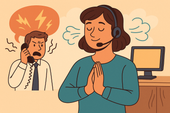
How to Handle Customer Service Stress Without Losing Your Cool 💬🧘♀️
Customer service can test even the calmest person’s patience. 😤 Learn how to handle difficult clients and daily pressure without losing your cool — through better mindset management, calming breathwork, and practical communication tools. Stay grounded, protect your energy, and transform stress into strength. 🌿
-
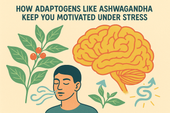
How Adaptogens Like Ashwagandha Keep You Motivated Under Stress
Feeling overwhelmed and unmotivated? 🌿 Discover how adaptogens like Ashwagandha can help you stay centered, focused, and energized under stress. Learn how supplements, breathwork, and therapy work together to restore your natural motivation and help you thrive — even during life’s toughest moments. 💪✨
-
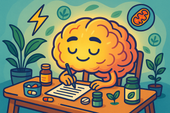
Supplements That Support Long-Term Productivity Without the Crash ⚡🌿
Cortisol — your body’s main stress hormone — can be both your best friend and worst enemy. ⚡ When balanced, it keeps you focused, energized, and ready to act. But when it stays high for too long, it leads to fatigue, anxiety, and emotional crashes. Learn how to regulate cortisol naturally through supplements, sleep, and stress management to maintain calm, steady productivity. 🌿
-
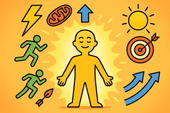
Why Energy Levels and Motivation Go Hand in Hand ⚡🧠
B-vitamins are the brain’s spark plugs 🔋. They turn food into fuel, support neurotransmitter production, and keep your mood, energy, and focus balanced. Learn how vitamins like B6, B9, and B12 work together to power the nervous system, reduce fatigue, and keep motivation high. 🌿
-
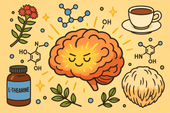
The Science of Motivation: Can Nootropics Help You Stay Focused? 🧠⚡
Nootropics are nature’s tools for sharper thinking and sustainable focus 🧠🌿. From Rhodiola and Lion’s Mane to L-theanine and Bacopa, these brain-boosting compounds enhance motivation, memory, and stress resilience. Learn the science behind how nootropics work — and how to use them safely for peak mental performance and clarity. ⚡
-
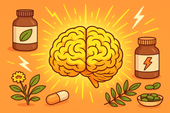
How Natural Supplements Can Boost Your Daily Drive
Cortisol is your body’s main stress hormone — powerful, necessary, but often misunderstood. ⚡ When balanced, it keeps you alert and energized; when chronically elevated, it drains mood, motivation, and focus. Learn how to regulate cortisol naturally through nutrition, supplements, and calming lifestyle habits for steady energy and emotional balance. 🌿
-
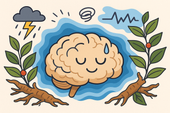
Ashwagandha for Stress and Low Mood
Breathwork is more than a relaxation tool — it’s a way to rewire your nervous system. 🌬️ Through intentional breathing, you can reduce stress hormones, improve focus, and calm emotional turbulence. This guide explores the science of breathwork and its powerful effects on mental clarity, resilience, and emotional regulation. 🌿
-
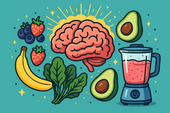
Mood-Boosting Smoothie Recipes
Your blood sugar affects far more than energy — it influences mood, focus, and emotional stability too 🍎. Learn how maintaining balanced glucose levels supports brain health, reduces anxiety, and prevents emotional crashes. Discover the foods and habits that keep your mind calm and your energy steady throughout the day. 🌿
-
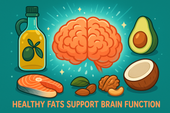
How Healthy Fats Support Brain Function
Your brain thrives on healthy fats 🧠💧. From omega-3s to MCTs, the right fats enhance focus, memory, and mood while protecting against inflammation and aging. This article explores how good fats — like those from olive oil, salmon, avocado, and nuts — build sharper thinking, emotional balance, and lasting brain vitality. 🌿
-
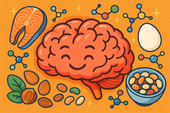
The Role of Protein in Mental Clarity
Protein isn’t just for muscles — it’s for your mind. 🧠 This guide explores how amino acids from high-quality protein fuel neurotransmitters, stabilize mood, and sharpen focus. Learn how balanced protein intake supports dopamine, serotonin, and energy regulation to boost mental clarity and emotional stability naturally. 🍳🌿
-
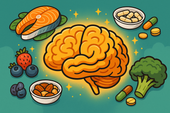
Nutrients That Support Emotional Stability
Your emotions are built from nutrients as much as from thoughts 🌿. This science-backed guide reveals the vitamins, minerals, and healthy fats that stabilize mood and reduce stress — from B-vitamins and magnesium to omega-3s and probiotics. Learn how balanced nutrition supports neurotransmitters, strengthens resilience, and promotes lasting calm and clarity 🧠✨.
-
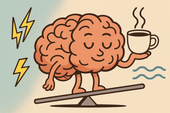
How Caffeine Affects Your Mood ☕
Your morning coffee might lift your spirits — but what’s really happening inside your brain? ☕ This in-depth guide explores how caffeine affects mood, motivation, dopamine, and stress. Learn how to enjoy caffeine mindfully without triggering anxiety, burnout, or emotional crashes. Discover the science behind your energy highs and lows — and how to find calm, sustainable focus. 🌿
-
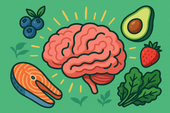
The Best Anti-Inflammatory Diet for Mental Health
Inflammation doesn’t just affect your body — it impacts your mood, focus, and emotional resilience too 🌿. This comprehensive guide reveals how an anti-inflammatory diet can support mental health by reducing neuroinflammation, balancing gut bacteria, and stabilizing blood sugar. Learn which foods to eat (and which to avoid) to protect your brain, boost serotonin, and promote lasting calm. 🧠✨
-

Why Sugar Spikes Can Worsen Depression
Sugar highs can make you feel good for a moment — but what comes next can fuel emotional crashes and deepen depression 🍭. This article explains how blood sugar spikes disrupt brain chemistry, increase inflammation, and destabilize serotonin. Learn how food, supplements, breathwork, and therapy can help you break the sugar–mood cycle and restore lasting emotional balance 🌿.
-
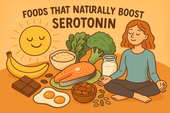
Foods That Naturally Boost Serotonin
Serotonin isn’t just a brain chemical — it’s your body’s built-in mood stabilizer 🌞. This in-depth guide explores how natural foods like salmon, eggs, bananas, and dark chocolate can elevate serotonin levels, while gut health, key nutrients, supplements, breathwork, and therapy create the perfect synergy for calm and emotional balance. Learn how to support your mind through diet, lifestyle, and mindset — naturally. 🌿
-
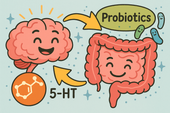
Probiotics for Mood Balance
-
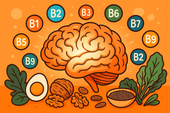
B-Vitamins and Their Role in Mental Health
Methylation is one of your body’s most important biochemical processes — influencing mood, energy, and focus. Powered by B-vitamins like B6, B9, and B12, it helps your brain create serotonin, detox efficiently, and maintain emotional balance. 🌿
-
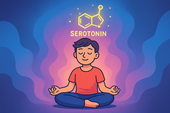
5-HTP for Serotonin Support
Calm isn’t just an emotion — it’s a physiological state where your body and mind finally sync in peace. By slowing your breath, softening your thoughts, and creating safety within, you restore the deep relaxation your nervous system craves. 🌿
-
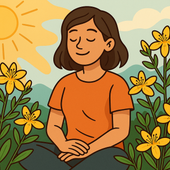
St. John’s Wort for Mild Depression
Antidepressants can be life-changing for many — but understanding how they work and what natural options like St. John’s Wort can complement them is key. Learn how both approaches affect brain chemistry, mood balance, and long-term emotional wellness. 🌿
-
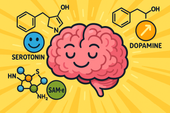
SAM-e: A Natural Mood Booster
Emotional regulation is the art of staying calm and grounded, even when life feels chaotic. By balancing your brain, body, and breath, you can respond with clarity instead of reacting from stress — building real emotional resilience and inner peace. 🌿
-

Rhodiola Rosea for Emotional Resilience
Neuroplasticity is your brain’s ability to grow, adapt, and heal — even after stress or trauma. Every thought, emotion, and habit reshapes your neural pathways, helping you build stronger emotional resilience, sharper focus, and lasting mental balance. 🌿
-
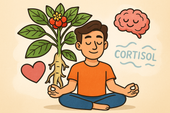
Ashwagandha for Stress and Low Mood
Adaptogens are nature’s stress balancers — powerful herbs like ashwagandha, rhodiola, and reishi that help your body adapt to tension, fatigue, and change. By regulating cortisol and supporting your nervous system, they build calm focus and emotional resilience from the inside out. 🌙
-
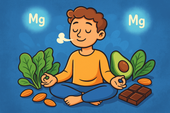
Magnesium’s Role in Emotional Regulation
Neuroscience helps us understand why we feel, think, and react the way we do. From brain chemistry and neural circuits to stress responses and emotional learning, the science of the brain reveals how our minds can heal, grow, and find balance. 🌿
-
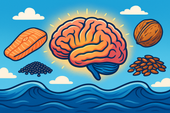
Omega-3 Fatty Acids and Emotional Well-Being
Nutrients aren’t just fuel — they’re communication signals that tell your brain and body how to function. From magnesium and vitamin D to omega-3s and B vitamins, the right mix of nutrients helps calm your mind, balance hormones, and support emotional and physical well-being. 🌙
-
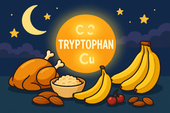
The Role of Tryptophan in Sleep Health
Mental health isn’t just the absence of illness — it’s the foundation of calm, focus, and emotional resilience. From managing stress and anxiety to nurturing self-compassion, understanding your mental well-being is the first step toward a balanced, more peaceful life. 🌿
-

Nutrients That Promote Nighttime Relaxation
Potassium does more than balance fluids — it also helps your body and mind relax at night. By calming nerves, reducing muscle tension, and supporting steady heart rhythm, potassium-rich foods like bananas, sweet potatoes, and coconut water can promote deeper, more restful sleep. 🌙
-

Sleep-Friendly Smoothie Recipes
Melatonin is your body’s natural sleep signal — a hormone that tells your brain when it’s time to rest. Learn how melatonin works, which foods and habits boost its production, and how to use it wisely for deeper, more restorative sleep without dependence. 💤
-
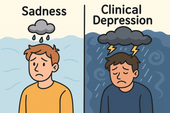
The Difference Between Sadness and Clinical Depression
Your emotions aren’t just in your mind — they’re written in your brain chemistry. Serotonin, dopamine, and GABA work together to regulate mood, motivation, and calm. When they fall out of balance, you may feel anxious, fatigued, or low. Learn how these brain chemicals influence your mental health and what you can do to restore harmony naturally. 🌿
-
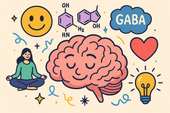
How Brain Chemistry Influences Mood
Your brain is a symphony of neurotransmitters — serotonin, dopamine, GABA, and more — working together to shape how you think and feel. When they’re balanced, you experience calm focus and emotional stability. When they’re not, mood swings and fatigue can follow. Learn how to naturally support these vital messengers for better mood and mental clarity. 🌿
-
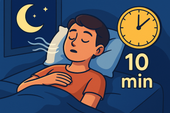
How to Fall Asleep in Under 10 Minutes
The military knows a few secrets about falling asleep fast — and they work even in chaos. This article explores the science behind rapid relaxation, including the famous “Military Sleep Method,” which teaches your body to shut down stress and rest on command. Learn how discipline, breath, and focus can help anyone fall asleep in minutes. 🌙
-
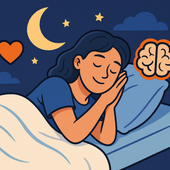
Why Emotional Resilience Improves Sleep
Emotional resilience isn’t just about mental strength—it’s also a key ingredient for better sleep. When your emotions are balanced, your body releases fewer stress hormones, your mind quiets faster, and your sleep becomes deeper and more restorative. Learn how to cultivate calm through mindset, breathwork, and daily habits. 🌙
-
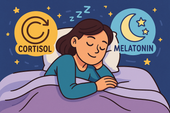
The Connection Between Stress Hormones and Sleep
Chronic stress can quietly reshape your body’s chemistry, raising cortisol, disrupting sleep, and draining your energy. This guide explores how long-term stress affects your nervous system, hormones, and rest—and how to restore calm through breathwork, nutrition, and daily recovery rituals. 🌿
-
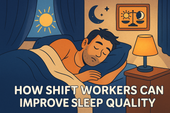
How Shift Workers Can Improve Sleep Quality
For shift workers, caffeine can be both a lifeline and a sleep disruptor. Learn how to use it strategically—boosting alertness during work hours without sabotaging rest. This guide explores timing, dosage, and smarter natural alternatives to keep your energy steady and your sleep restorative. 🌙
-
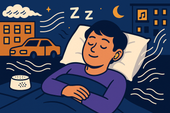
How to Sleep Better in a Noisy Environment
Living in a noisy area doesn’t mean sacrificing your rest. Learn practical and natural strategies to sleep better in loud environments—from using sound masking and breathwork to creating calming rituals that help your brain tune out the chaos. Find inner silence even when the world outside won’t quiet down. 🌙
-
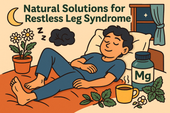
Natural Solutions for Restless Leg Syndrome (RLS)
Struggling to sleep deeply and wake refreshed? This soothing guide explores how the body restores itself during quality sleep—and how to support it naturally. Learn about the science of rest, the role of nutrients, and the rituals that promote deep, uninterrupted slumber. 🌙
-
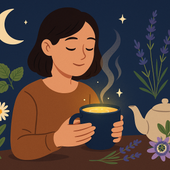
The Perfect Evening Herbal Blend
Discover the calming power of nature in your teacup. The perfect evening herbal blend combines chamomile, lemon balm, lavender, and adaptogens like ashwagandha to relax your body and quiet your mind before bed. Learn how to craft and customize a soothing, sleep-enhancing tea ritual that helps you unwind, restore, and wake up refreshed. 🌙
-
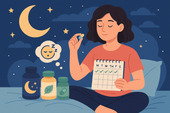
How to Cycle Sleep Supplements for Maximum Effectiveness
Wondering why your sleep supplements stop working after a while? This guide breaks down how to cycle sleep aids like melatonin, magnesium, and ashwagandha for consistent, long-term results. Learn when to rest your body, how to prevent tolerance, and what natural methods—like breathwork and therapy—enhance your sleep cycles. 🌙
-
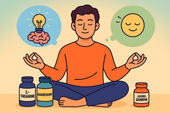
The Best Supplements for Both Relaxation and Focus
Calm your mind and sharpen your focus with the perfect blend of natural supplements. From L-theanine and magnesium to Rhodiola and Lion’s Mane, this science-based guide shows how to achieve relaxation and clarity at the same time. Discover stacks that support your nervous system, balance mood, and keep your mind laser-focused without the crash. 🌿
-
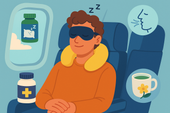
How to Sleep Better During Travel
Traveling can be thrilling—but sleepless nights can ruin even the best trips. From supplements like magnesium and melatonin to soothing breathwork and therapy-based techniques, this guide shows you how to sleep deeply on planes, in hotels, or across time zones. Learn to calm your body, reset your circadian rhythm, and build rest rituals that work anywhere in the world 🌙
-
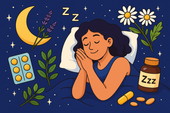
Improving Sleep in Menopause with Supplements
Menopause can make peaceful sleep feel impossible — but balance is within reach 🌿. This article explores how supplements like magnesium, ashwagandha, and black cohosh can ease night sweats, calm the mind, and restore your natural sleep rhythm during hormonal changes.
-
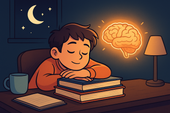
Sleep Support for Students During Exams
Exam stress can make it hard to rest — but sleep is what helps you perform your best 💤. This article explains how to improve sleep quality during exams through better study habits, natural supplements, breathwork, and therapy tools to calm the mind and sharpen focus.
-

Rest Strategies for Entrepreneurs
Entrepreneurs often burn out chasing their vision — but rest is the real fuel for success 🌙. This article explores science-backed recovery strategies for founders, including sleep, breathwork, therapy, and nutrition techniques that sharpen creativity and sustain performance.
-

How Sleep Affects Athletic Recovery
Sleep is where strength is built. 💤 This article explores how deep sleep drives muscle recovery, hormonal balance, and athletic performance — plus how supplements like magnesium, melatonin, and ashwagandha can enhance overnight repair and boost training results.
-

Better Sleep for People with Chronic Pain
Living with chronic pain makes sleep feel impossible — but it’s not. 🌙 This article explores how pain disrupts rest and how to rebuild your sleep through gentle breathwork, calming nutrition, therapy, and supplements that help your body relax and heal.
-

How to Sleep Better During Seasonal Changes
Seasonal shifts can throw your sleep off balance 🌦️. This article explains how light, temperature, and hormones change with the seasons — and how to restore your rhythm naturally through melatonin-supportive foods, breathwork, and therapy for emotional balance.
-

Foods That Naturally Boost Melatonin
Want to fall asleep faster without supplements? 🌙 This article explores how foods like tart cherries, pistachios, and kiwi naturally boost melatonin, the hormone that regulates sleep. Learn how to build an evening meal plan — plus simple rituals like breathwork and herbal tea — to improve rest and reset your circadian rhythm.
-

The Role of Herbal Tea in Relaxation
Herbal tea is more than comfort in a cup 🍵 — it’s nature’s gentle way to calm the mind and relax the body. This article explores how teas like chamomile, lavender, and lemon balm support stress relief, sleep quality, and emotional balance — plus how to pair them with magnesium, breathwork, and mindful rituals for deeper peace.
-

Lavender Extract and Its Calming Effects
Lavender extract is one of nature’s most soothing remedies 🌸. This article explores how lavender calms the nervous system, lowers cortisol, and improves sleep — plus how to combine it with magnesium, breathwork, and therapy for deep relaxation and emotional balance.

















































